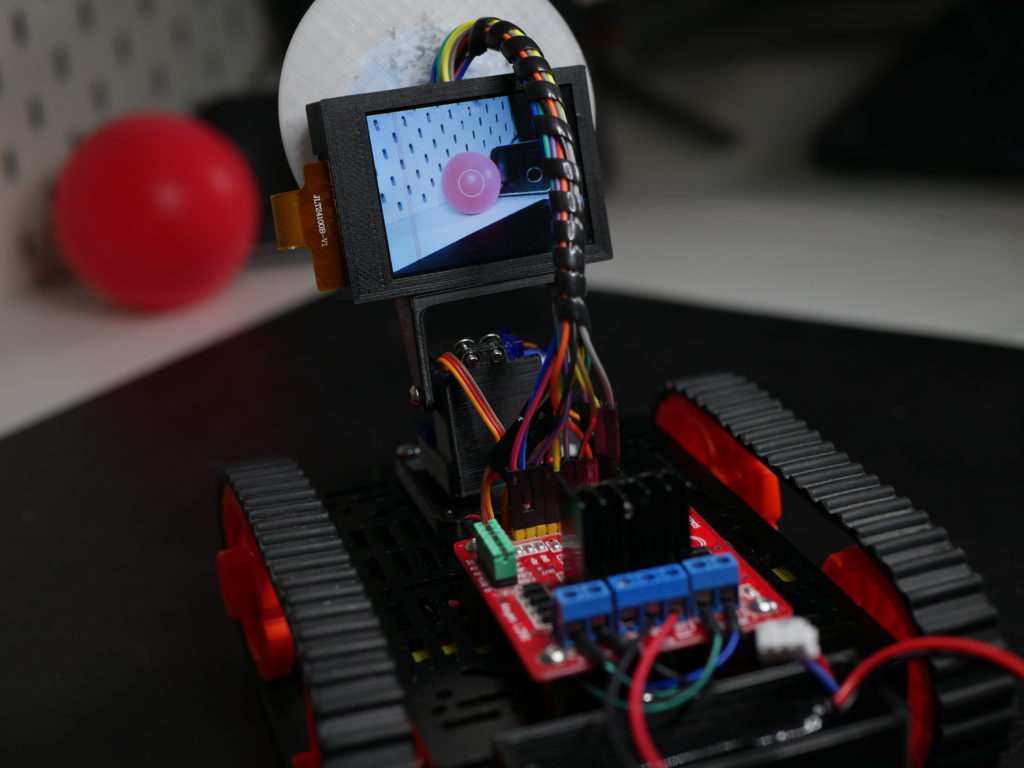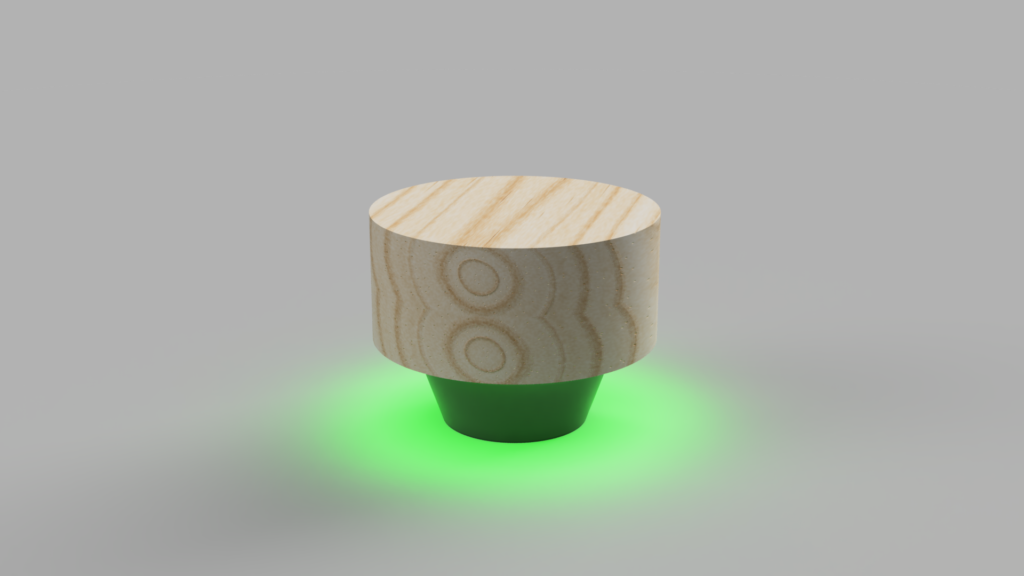
Automating every day tasks are the best projects for so many reasons. You can find a real problem and take it as a challenge to automate it. In the end you will end up with plenty of new knowledge, practical experience with problem solving and more time for new projects because a new project will take care of the every day task. Simple and really rewarding project of this kind is an automated watering system add to that solar power and you have a perfect solution!
To learn more about the project, how I built it, problems I faced and how it works take a look at this video:
Parts
Here is a list of parts you will need to build a Pico watering system. You cna find all the files for both systems on my GitHub, links at the end of this page.
| Name | Amazon | Aliexpress |
| Raspberry Pi Pico | https://amzn.to/3O2GBdG | https://bit.ly/3c9K7FP |
| Solar panel and charger | https://amzn.to/3PqgpLp | https://bit.ly/3yDzbIe |
| Garden irrigation system | https://amzn.to/3uLS3DL | https://bit.ly/3c9sE0m |
| Pump | https://amzn.to/3O74vF0 | https://bit.ly/3z0th5v |
| Water level sensor | https://amzn.to/3z16nL9 | https://bit.ly/3nVWZSD |
| IRFZ44N | https://amzn.to/3O1NyvJ | https://bit.ly/3aG8udU |
| LEDs | https://amzn.to/3yxl1Zj | https://bit.ly/3NZ0nXz |
| Buttons | https://amzn.to/3z0r75T | https://bit.ly/3yD8UtK |
| Battery | https://amzn.to/3ceAIx6 |
Links above are affiliate so by using them you support my work at no extra cost. If you would like to support me in a different way you can check out my store or my Patreon:
Two systems
My plan was to build a watering system with a few sensors just for fun. While building it I started adding more and more sensors and ended up with a pretty sophisticated system. Also I wanted to make this project in a good old DIY fashion to make it easy for everyone to replicate. In the end I wasn’t quite happy with the system as it was too complicated, there was too many cables everywhere and it wasn’t simple enough to be elegant.
AdIt’s important to mention that this first system was working great for 11 days and was perfectly watering my garden. Unfortunately the power consumption was pretty high because of many LEDs I had there so it would only work for a few more cloudy days before running out of battery. My DIY soil moisture sensors weren’t working reliably and after creating the plots all the sensors weren’t really needed anymore. All I needed was a simple watering system.

It obviously wasn’t a waste of time because I learned a lot while making this first version of the system and I used that experience while making the second one. Also with the data collected over 11 days I made some cool looking plots. There is a vertical line every 86 milion milliseconds (that’s 24 hours) so we can see that we have data from almost full 11 days. It was collected during a heatwave in Poland (that was quite fortunate because the system was able to charge fully during the day to survive the night).
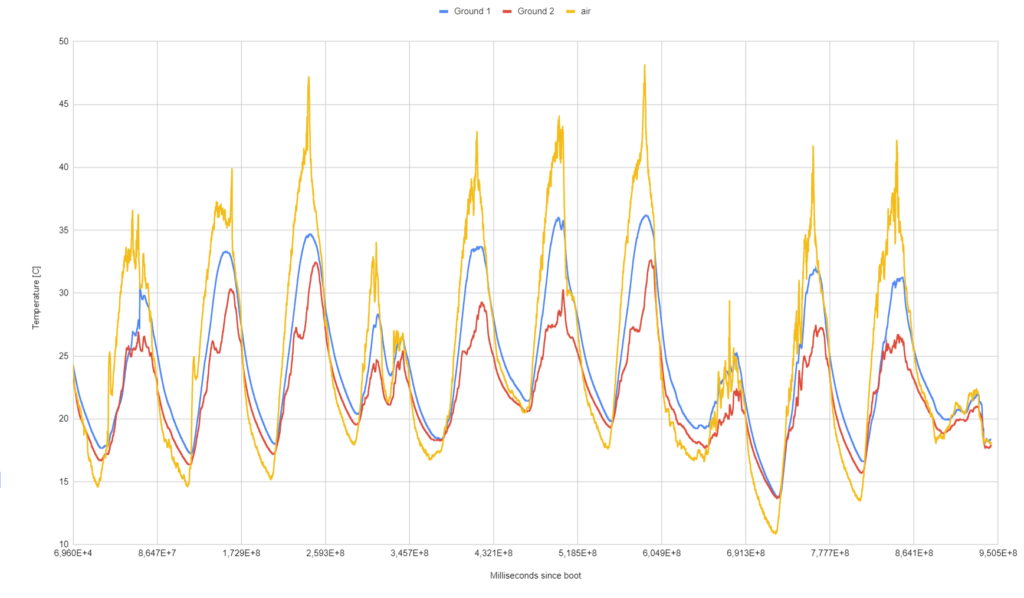
Here we can see sudden drops in the data from ground moisture sensors, unfortunately it is caused by a voltage drop on the battery when turning on the pump. Based on these plots we can conclude that these sensors weren’t working properly. I hope to try to build my own capacitive moisture sensor soon.
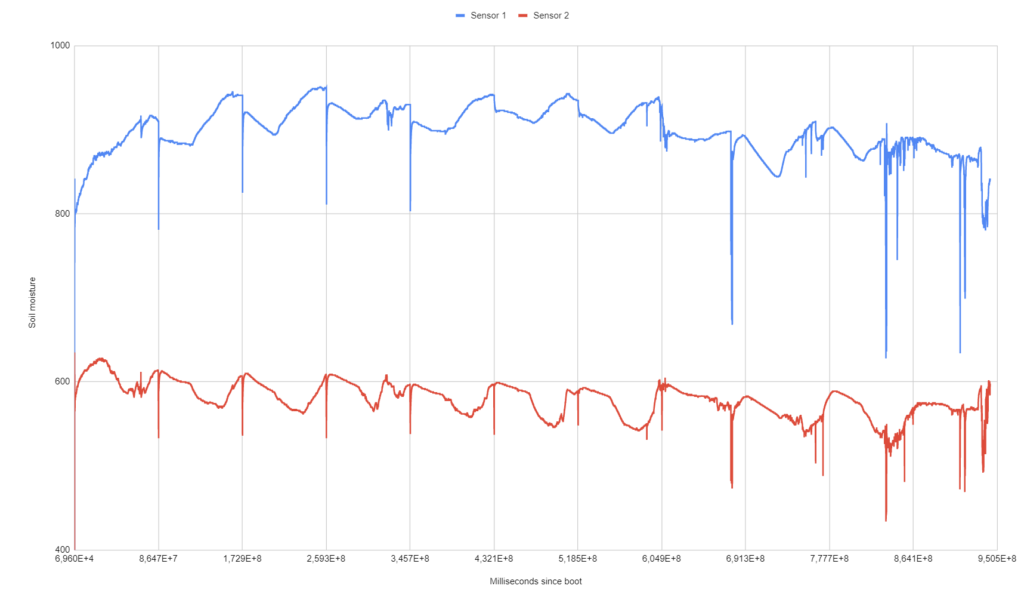
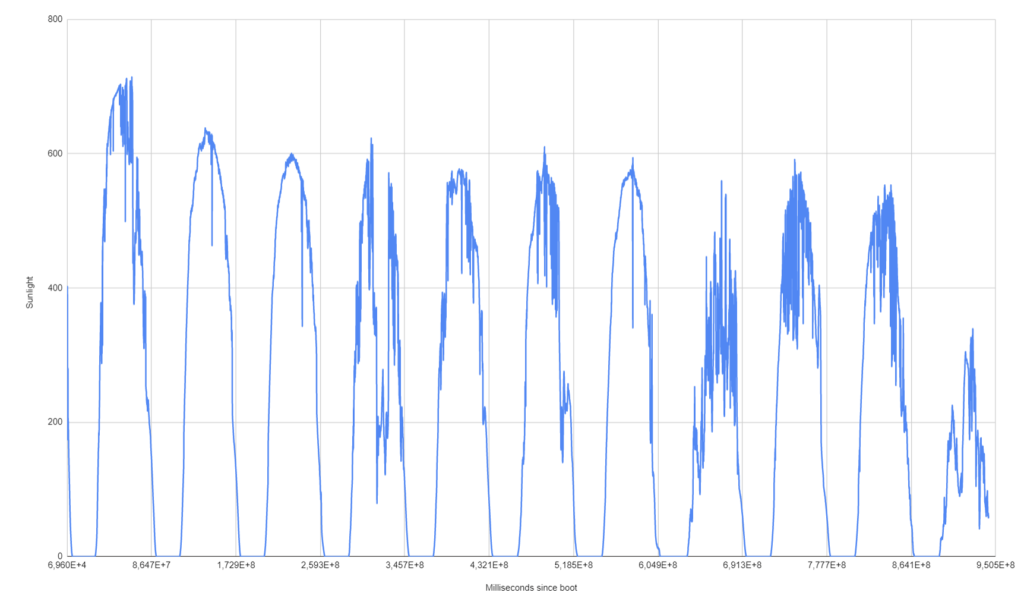
Here we can see nice correlation between the plots above and below. It’s also visible that the solar charging system wasn’t big enough and wasn’t able to charge the battery on a cloudy day and it got discharged significantly. That’s why reducing power consumption in such systems is really important.
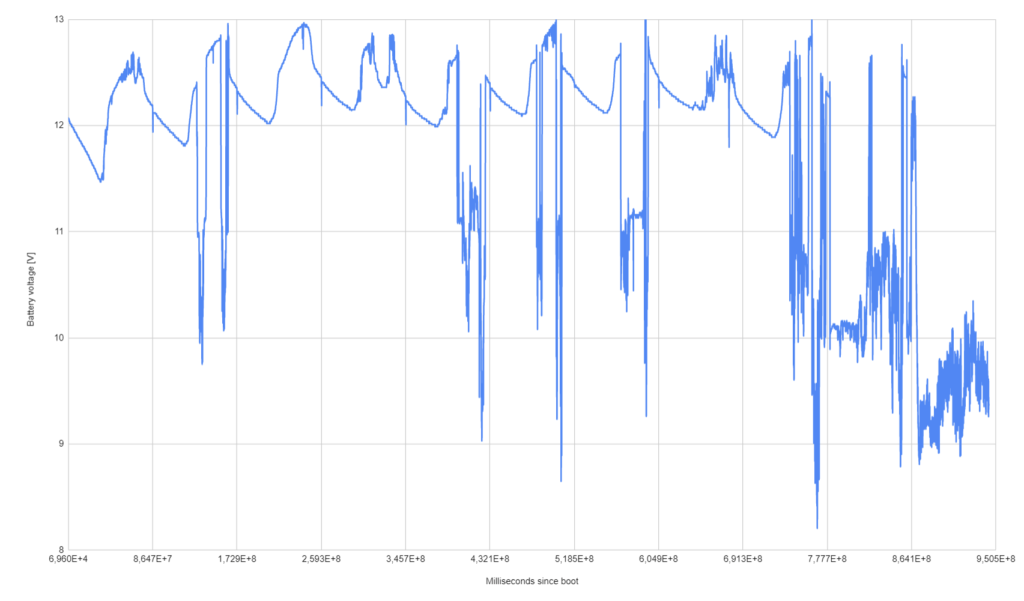
For that reason I decided to start all over again and design a new simple system with only necessary components that consumes less current, is easier to build and more elegant. This time instead of using Arduino (Arduino is great and I still love it but sometimes it’s nice to experiment and try something new) I used Raspberry Pi Pico a microcontroller based board from Raspberry Pi based on RP2040 chip. It’s incredibly chip for what it can offer and is programmed in Python. It’s not the best choice for extreme low power solutions but I am using here a 12V 4Ah battery with a 10W solar panel so that’s not the most important factor for me. RP2040 chip itself is low cost compared to other solutions and what’s really important these days (July 2022) is available. Adding to that a 7805 voltage regulator, IRFZ44N MOSFETs, buttons and a few LEDs I designed a simple single sided PCB – single sided means easy to make at home. To make it I used a $200 CNC machine.


There is two of everything on the PCB so you can run two separate systems for different parts of the garden (it’s not yet implemented in the program). With two buttons and 8 LEDs you can easily set number of watering cycles per day (between 1 and 4) and watering cycle time (you can choose from 2, 4, 6 and 8 minutes per cycle) of course that can be also adjusted in the program depending on what you need in your garden. Settign are stored in the flash memory of the Pico, it’s amazing that you can simply safe a file there as you would in a normal Python running on your computer!

Case was 3D printed with PETG on Ender3 and additionally closed in a 2l food container together with the battery to protect it. I also used cable gland to go with the cables through the container. In the end everything was attached to a a wooden pole and solar panel got pointed south for maximum efficiency. I used a 150l water reservoir that honestly after testing it for two weeks is a bit small and something closer to 300l would be great. Also a rain water collection system could help here significantly.

Files
You can find all the files for this project on my GitHub:
Here is a link to the Pico watering system:
https://github.com/NikodemBartnik/Pico-Watering-System
And here is a link to the WDCS (Watering and Data Collection System):
https://github.com/NikodemBartnik/WDCS
Feel free to ask any questions, share the video and contribute to the open source project!
Happy making and have a nice day!
